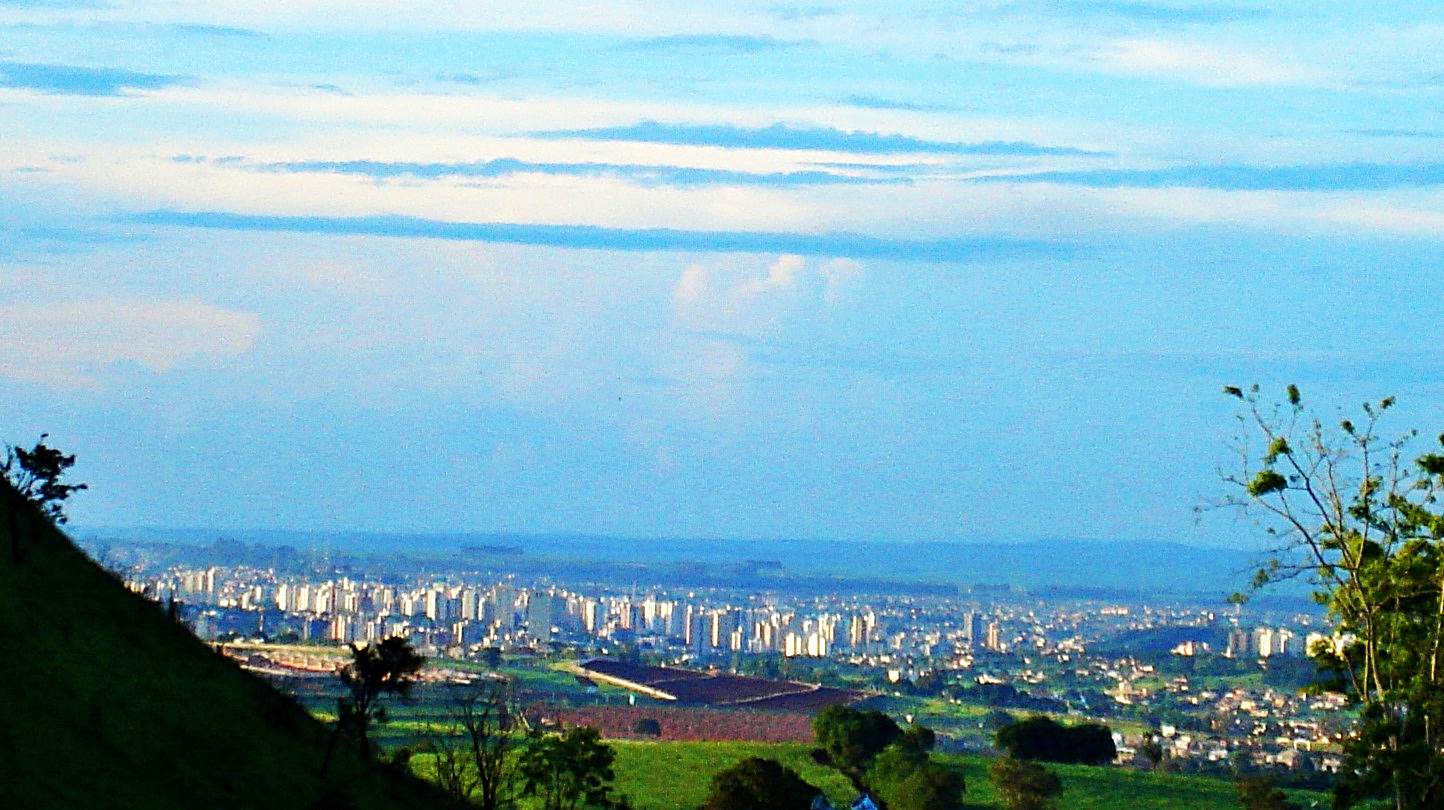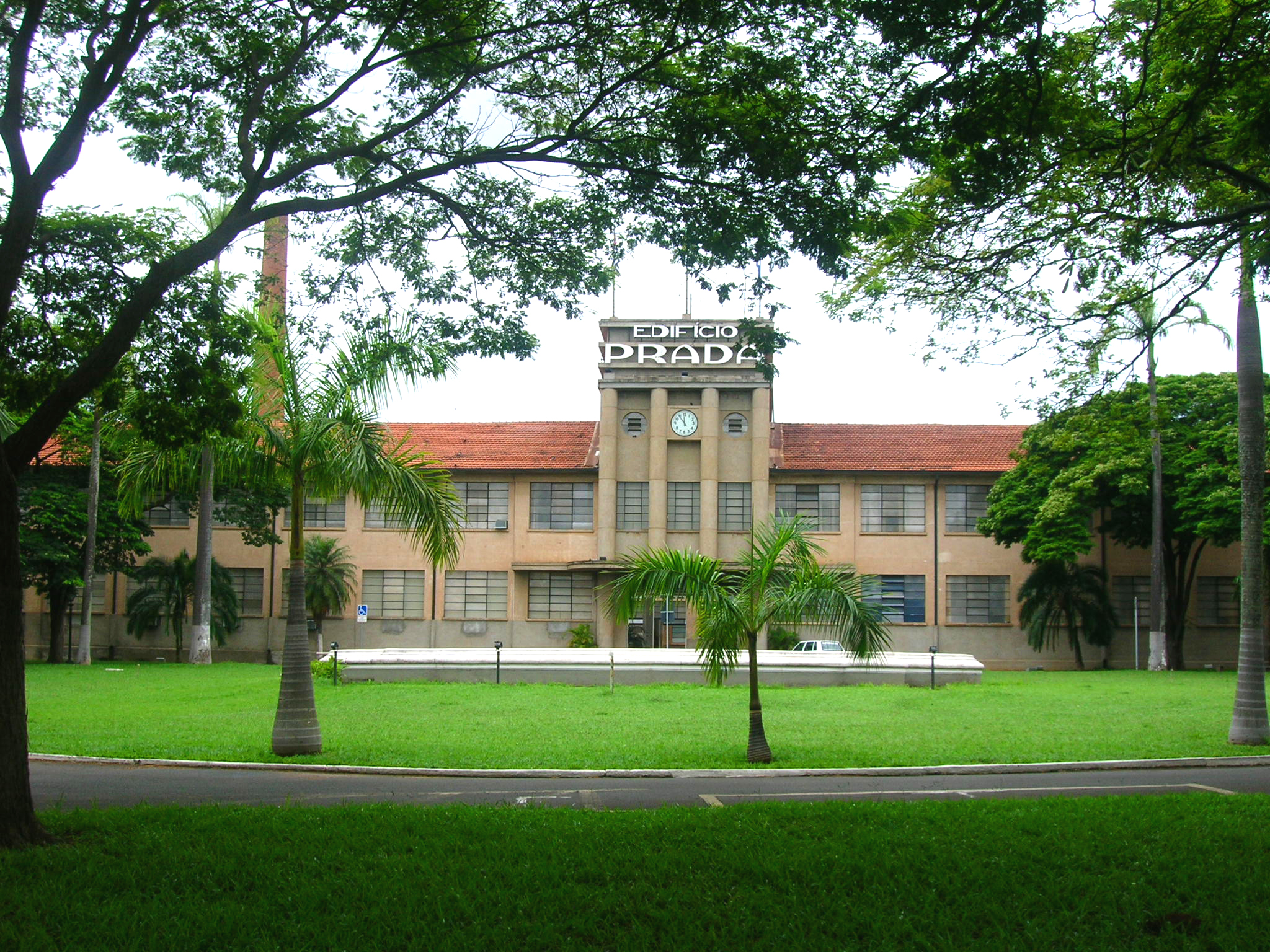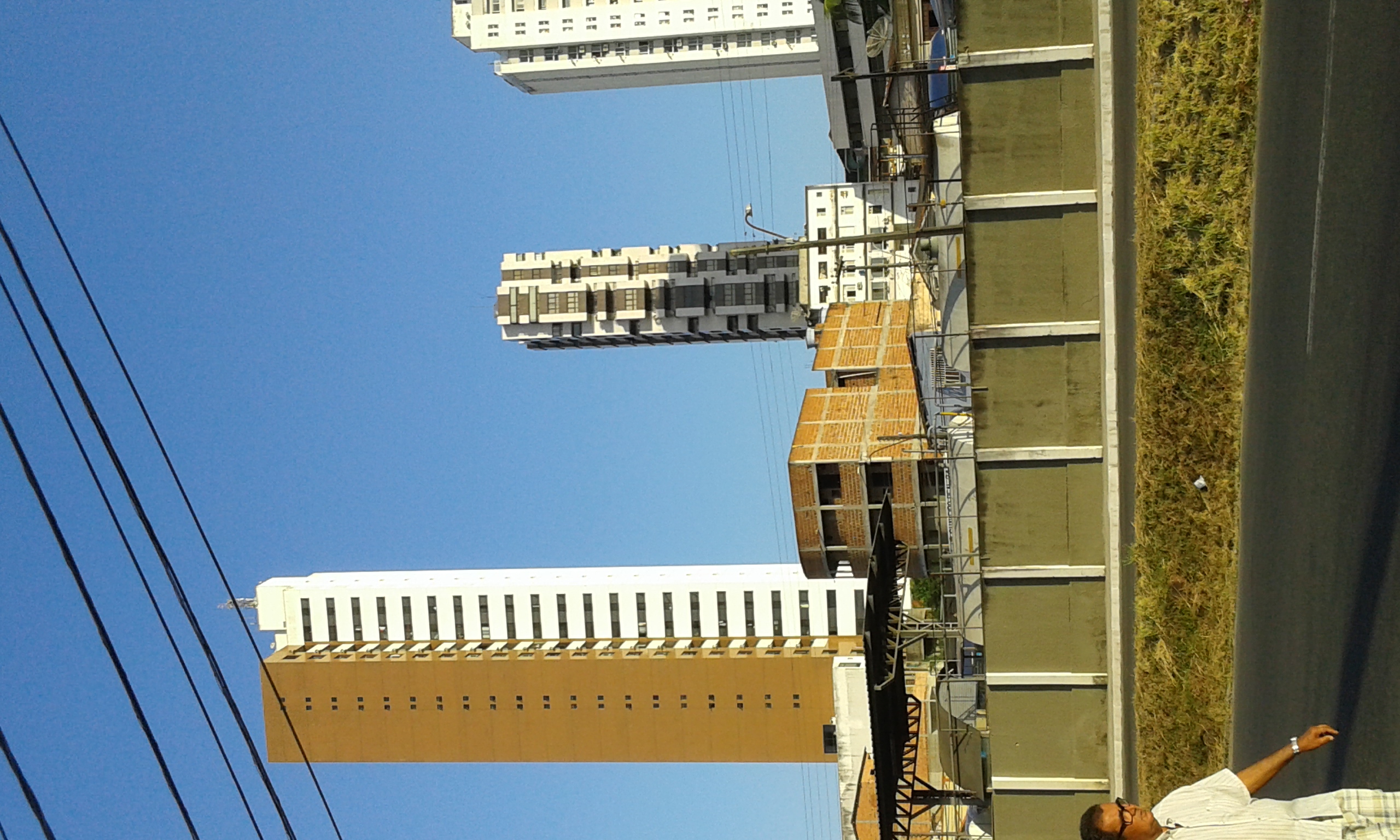|
Rede Família
RFTV (acronym for Rede Família de Televisão, literally "Family Television Network", previously named simply as Rede Família, "Family Network") is a Brazilian television network based in Campinas, São Paulo. It is one of the Record Group companies. It was created on August 1, 1998, and currently maintains a programming schedule with journalistic and variety programs, as well as reruns of programs produced by its sister company Record. Its terrestrial coverage covers, in addition to the Metropolitan Region of Campinas, some locations in the interior of São Paulo and scattered cities in the Southeast, North and Northeast regions of the country through relays, as well as national coverage via satellite in C band and Ku band. History First phase (1998-2011) Rede Família emerged from TV Thathi in Campinas (being licensed in Limeira), until then affiliated with Rede Manchete, which belonged to businessman Chaim Zaher since 1993, and which was acquired by Grupo Record. The new networ ... [...More Info...] [...Related Items...] OR: [Wikipedia] [Google] [Baidu] |
Free-to-air
Free-to-air (FTA) services are television (TV) and radio services broadcast in unencrypted form, allowing any person with the appropriate receiving equipment to receive the signal and view or listen to the content without requiring a subscription, other ongoing cost, or one-off fee (e.g., pay-per-view). In the traditional sense, this is carried on terrestrial radio signals and received with an antenna. FTA also refers to channels and broadcasters providing content for which no subscription is expected, even though they may be delivered to the viewer/listener by another carrier for which a subscription is required, e.g., cable television, the Internet, or satellite. These carriers may be mandated (or OPT) in some geographies to deliver FTA channels even if a premium subscription is not present (providing the necessary equipment is still available), especially where FTA channels are expected to be used for emergency broadcasts, similar to the mandatory emergency phone num ... [...More Info...] [...Related Items...] OR: [Wikipedia] [Google] [Baidu] |
Rede Mulher
Rede Mulher was a Free-to-air television broadcaster from Brazil founded on August 8, 1994. Though the broadcast was made from the city of Araraquara, in the central region of the state of São Paulo, all of its television productions was produced in the broadcaster's studios in the capital, São Paulo. Since the channel's debut, the IBOPE (measure of channel popularity) has been relatively low. Promising to invest in quality and in the workers, the Universal Church, bought part of the station in 1999 through Edir Macedo. Shortly after the purchase of the broadcaster, Edir Macedo moved the headquarters of Rede Mulher to the old premises of Rede Record, at Miruna Avenue in Moema—unoccupied since the broadcast moved to the Barra Funda neighborhood in 1995. From this, structural investments in the channel began. In September 2000, Rede Mulher invested US$500.000 in the acquisition of a new digital capture and completion system, reworked its studios and launched new programs. In ... [...More Info...] [...Related Items...] OR: [Wikipedia] [Google] [Baidu] |
Television Channels And Stations Established In 1998
Television (TV) is a telecommunication medium for transmitting moving images and sound. Additionally, the term can refer to a physical television set rather than the medium of transmission. Television is a mass medium for advertising, entertainment, news, and sports. The medium is capable of more than "radio broadcasting", which refers to an audio signal sent to radio receivers. Television became available in crude experimental forms in the 1920s, but only after several years of further development was the new technology marketed to consumers. After World War II, an improved form of black-and-white television broadcasting became popular in the United Kingdom and the United States, and television sets became commonplace in homes, businesses, and institutions. During the 1950s, television was the primary medium for influencing public opinion.Diggs-Brown, Barbara (2011''Strategic Public Relations: Audience Focused Practice''p. 48 In the mid-1960s, color broadcasting was in ... [...More Info...] [...Related Items...] OR: [Wikipedia] [Google] [Baidu] |
Portuguese-language Television Networks
Portuguese ( or ) is a Western Romance language of the Indo-European language family originating from the Iberian Peninsula of Europe. It is the official language of Angola, Brazil, Cape Verde, Guinea-Bissau, Mozambique, Portugal and São Tomé and Príncipe, and has co-official language status in East Timor, Equatorial Guinea and Macau. Portuguese-speaking people or nations are known as Lusophone (). As the result of expansion during colonial times, a cultural presence of Portuguese speakers is also found around the world. Portuguese is part of the Iberian Romance languages, Ibero-Romance group that evolved from several dialects of Vulgar Latin in the medieval Kingdom of Galicia and the County of Portugal, and has kept some Gallaecian language, Celtic phonology. With approximately 250 million native speakers and 17 million second language speakers, Portuguese has approximately 267 million total speakers. It is usually listed as the List of languages by number of native speaker ... [...More Info...] [...Related Items...] OR: [Wikipedia] [Google] [Baidu] |
RecordTV
Record (stylized in uppercase; ), formerly known as Rede Record and RecordTV, is a Brazilian free-to-air television network. It is currently the second largest commercial TV station in Brazil, and the 28th largest in the 2012 world ranking. In 2010, it was elected by the advertising market as the fifth largest station in the world in revenues and the eighth largest network in physical structure. In June 2021, it ranked second among the most watched channels in the country in the National Television Panel, behind only TV Globo. As the main member of the media company Grupo Record, the network is headquartered in São Paulo, where most of its programming is also generated at the Dermeval Gonçalves Theater, and has a branch in Rio de Janeiro, where its telenovelas and other formats are produced at the Casablanca Estúdios (RecNov) complex. Its national coverage is achieved by retransmission from 111 stations, 15 of which are owned by the company and 96 of which are affiliate s ... [...More Info...] [...Related Items...] OR: [Wikipedia] [Google] [Baidu] |
Essas Mulheres
''Esses Mulheres'' ( English: ''These Women'') is a Brazilian telenovela produced by RecordTV and aired between May 2 and October 21, 2005, for a total of 149 episodes, replacing '' A Escrava Isaura'' and being replaced by '. It was the second soap opera produced by the broadcaster since it resumed drama in 2004. It was based on three classic works by José de Alencar: ''Senhora'', '' Lucíola'', and ''Diva''. Written by , with the collaboration of , and , under the direction of and , general direction by Flávio Colatrello Jr. and core direction by . The production features Christine Fernandes, Carla Cabral, , Gabriel Braga Nunes, Adriana Garambone, , Ana Beatriz Nogueira, and João Vitti in the main roles. Background Brazilian writer José de Alencar wrote the three novels on which the soap opera was based: ''Senhora'', ''Diva,'' and ''Lucíola''. The novel ''Senhora'' had already been adapted four other times: the first by TV Paulista in 1953; twice by the now-def ... [...More Info...] [...Related Items...] OR: [Wikipedia] [Google] [Baidu] |
TV Universal
TV Universal is a Brazilian television channel headquartered in the city of Limeira, state of São Paulo, Brazil. It is a channel belonging to Universal Church of the Kingdom of God (in Portuguese, ''Igreja Universal do Reino de Deus'', ''IURD'') and transmits church services 24 hours a day via Internet and broadcast TV. Channels Bahia: * Salvador, Bahia, Salvador: Channel 57 (UHF) Piauí: * Teresina: Channel 32 (UHF) São Paulo: * Campinas: Channel 8 (VHF) * Limeira: Channel 11 (VHF) References [...More Info...] [...Related Items...] OR: [Wikipedia] [Google] [Baidu] |
Ribeirão Preto
Ribeirão Preto (Portuguese pronunciation: Help:IPA/Portuguese, [ʁibejˈɾɐ̃w ˈpɾetu]) is a city and a metropolitan area located in the northeastern region of São Paulo (state), São Paulo state, Brazil. Ribeirão Preto is the eighth-largest municipality in the State with . It has an estimated population of 720,216 in 2021 and a metropolitan area of 1,178,910. It is located from the São Paulo, city of São Paulo and from Brasília, the federal capital. Its mean altitude is high. The city's average temperature throughout the year is , and the original predominant vegetation is the Atlantic Forest. The city originated around 1856 as an agricultural region. Coffee was a primary income source until 1929 when it lost value when compared with the industrial sector. In the second half of the 20th century, investment in health, biotechnology, bioenergy, and information technology led to the city being declared a Technological Center in 2010. These activities have caused the ... [...More Info...] [...Related Items...] OR: [Wikipedia] [Google] [Baidu] |
Piracicaba
Piracicaba ( ) is a Municipalities of Brazil, Brazilian municipality located in the Interior of São Paulo, interior of São Paulo (state), São Paulo state, in the Southeast Region, Brazil, Southeast Region of Brazil. It serves as the main city of the Metropolitan Region of Piracicaba (RMP) and is situated approximately northwest of the state capital, São Paulo. Covering an area of just over , with around classified as urban area, Piracicaba has a population of 438,827 inhabitants, making it the List of municipalities in São Paulo, 13th most populous municipality in São Paulo state. Established in 1767 along the banks of the Piracicaba River (São Paulo), Piracicaba River, a vital water source for the region, Piracicaba saw significant agricultural development during the 19th century, particularly in sugarcane and coffee cultivation. However, the early 20th century brought economic decline due to the collapse of the Brazilian coffee cycle, coffee cycle and falling sugar pric ... [...More Info...] [...Related Items...] OR: [Wikipedia] [Google] [Baidu] |
Limeira
Limeira is a city in the eastern part of the Brazilian state of São Paulo. With a population of approximately 291,869 people (2022 IBGE.) and covering an area of 581 square kilometers, it sits at an elevation of 588 meters. The city is situated 154 kilometers from São Paulo, the capital of the state, and 1011 kilometers from Brasilia, the capital of Brazil. Limeira is conveniently accessible from São Paulo via two highways: Rodovia Anhanguera and Rodovia dos Bandeirantes. In the past, Limeira was a significant center for coffee cultivation and played a strategic role in the industry. It also earned the nickname "Brazilian orange capital" due to its extensive production of citrus fruits. However, the primary agricultural focus in the city has now shifted to sugar cane cultivation. Limeira has gained international recognition as "Brazil's plated jewelry capital" due to its thriving industry in plated and semi-jewelry. More than 450 companies in Limeira are responsible for half ... [...More Info...] [...Related Items...] OR: [Wikipedia] [Google] [Baidu] |
Itabuna
Itabuna is a municipality in Bahia, Brazil. It is the 6th largest city in Bahia by population after Salvador, Feira de Santana, Camaçari, Vitória da Conquista, and Juazeiro. It had an estimated 214,123 residents in 2021. Itabuna covers a total area of and has a population density of 550 residents per square kilometer. Etymology The name "Itabuna" derives from Tupiniquim ''itáabuna'', meaning ''father of stone'' (''itá'', stone + ''abuna'', father). This name refers to a rock the Tupiniquim thought reminded them of a father and was bigger than the other stones around. History The Portuguese arrived in the 16th century. The region was inhabited by the Tupiniquim, an indigenous group of the larger Tupi people. The Portuguese established the Captaincy of Ilhéus in the region, but it failed due to attacks by the nomadic Aimoré people, who emerged from the interior of Brazil in the 1550s. Settlement began when the region served as the main crossing point for drovers heading t ... [...More Info...] [...Related Items...] OR: [Wikipedia] [Google] [Baidu] |




